Interior Allows Mining Claims to be Staked in Conservation Lands
February 7, 2018 - California Desert - The Bureau of Land Management announced today that it is canceling the mineral withdrawal proposal from public lands managed now under the Desert Renewable Energy Conservation Plan (DRECP). This inlcudes 1.3 million acres of National Conservation Lands designated under the DRECP. Areas of Critical Environmental Concern (ACECs) may also be involved.
The BLM press release says: "In making its decision, the BLM recently reviewed mineral exploration levels and mining data in the California desert, as well as the expected impacts from future activities associated with locatable mineral extraction. The BLM concluded that impacts of future mineral exploration and mining, subject to existing environmental regulations, do not pose a significant threat to the protection of cultural, biological and scientific values."
We talked with BLM, and they told us now any new mining activity would have to undergo individual Environmental Assessment under the National Environmental Policy Act (NEPA). BLM could say, no exploration with vehicle entry, helicopter only (which would have its own impacts) based on the stipulations of the National Conservation Areas. Unless of course, Interior can somehow change those regs too.
Disturbance caps still apply for how much land can be subjected to these projects, although these may be raised in the future with the Trump revision of the DRECP.
EPA Proposes Mercury Emissions Standards for Gold Mines
April 16, 2010 - The U.S. Environmental Protection Agency (EPA) proposed national mercury emissions standards for gold mining facilities, the sixth-largest source of mercury air emissions in the country.
The rule would establish mercury emissions limits, based on the existing emissions levels of the best-performing U.S. facilities, for three types of processes found at gold production facilities.
For pre-treatment processes, EPA is proposing to limit mercury emissions to 149 pounds per million tons of ore for both new and existing sources. Mercury emissions from carbon processes in existing sources would be limited to 2.6 pounds per ton of concentrate, while new sources would be limited to 0.14 pounds. The rule would limit emissions from existing non-carbon concentrate processes to 0.25 pounds per ton of concentrate and emissions from new sources to 0.20 pounds.
The estimate is that 20 facilities in the United States that extract gold from ore that would be subject to the proposed rule. If enacted, the rule would reduce annual mercury emissions to about 1,390 pounds per year, a 73 percent reduction from 2007 levels.
The rule seeks to build on successes of emissions reductions in Nevada, one of the largest sources of gold in the world. Nevada's emissions have been reduced from about 11.5 tons in 1999 to about 2.5 tons in 2007, the agency said on its website.
Nevada's Division of Environmental Protection in 2006 issued regulations -- building on a 4-year-old voluntary program -- requiring best available mercury emissions control technology on all thermal units at Nevada's precious metal mines. EPA said it worked closely with Nevada to ensure that the state program could co-exist with a national one.
Today's proposed rule would also require several monitoring actions, including requiring that each facility conduct annual mercury emissions tests at all emissions stacks.
EPA will accept comment for 30 days once the rule appears in the Federal Register.
In http://www.eenews.net/eenewspm/2010/04/16/
February 16, 2010
Reward Mine Gets Permit
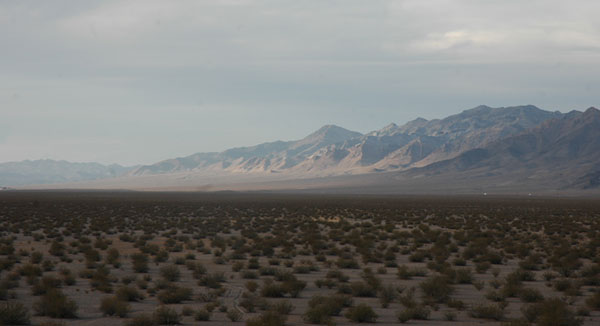
^Bare Mountains, Nye County, Nevada. The Reward Mine gold deposit lies on this sunny west slope.
See Story >>here.
November 13, 2009
Barrick Gold's Bald Mountain Mine and Mooney Basin Mine, Nevada, To Expand
The Bureau of Land Management (BLM) Nevada Ely District has prepared a Final Environmental Impact Statement (EIS) for a proposed expansion of Barrick Gold U.S. Inc.'s Bald Mountain Mine and Mooney Basin Mine. The two existing mines would be combined into one new expanded operation which would be called the North Operations Area. The proposed expansion would include 4,160 acres of previously permitted disturbance and 3,920 acres of new disturbance, for a total of 8,080 acres. Existing rock disposal areas and heap leach facilities would be expanded, and new areas explored.
The mines are located approximately 65 miles northwest of Ely, Nevada.
FOR FURTHER INFORMATION CONTACT: Lynn Bjorklund, phone: 775 289-1893, e-mail: Lynn_Bjorklund@blm.gov. Final EIS are available in the Ely District Office at 702 North Industrial Way, HC33 Box 33500, Ely, NV 89301. The document is available at: http://www.blm.gov/nv/st/en/fo/ely_field_office.html.
In: Federal Register, November 13, 2009, Volume 74, Number 218, page 58648.
September 15, 2009
Reward Mine Approved
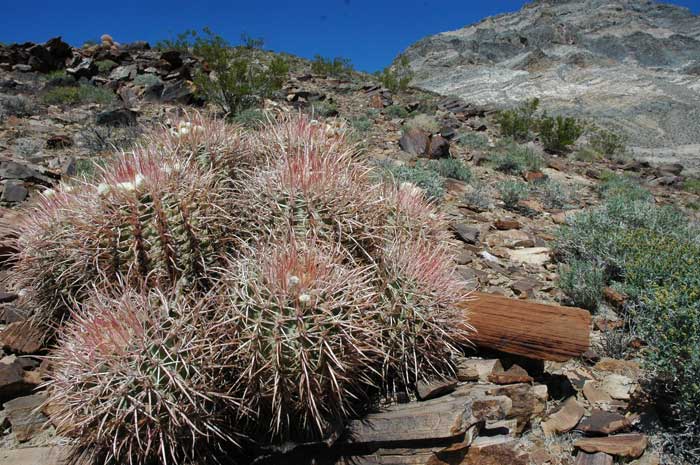
On August 12, 2009, the Bureau of Land Management (BLM) issued a Decision Record approving the Reward Mine project in the Bare Mountains, Nye County, Nevada, about 10 miles from the eastern boundary of Death Valley National Park. The CR Reward Corporation will build two open pit gold mines, a cyanide heap leach facility, and will pump groundwater from the (overdrawn) Amargosa Valley.
The BLM decided that an Environmental Impact Statement was not required, despite the presence of rare plants and a Desert bighorn sheep lambing ground on the site. The Timbisha Shoshone opposed the mine in a comment letter.
See the Las Vegas BLM website >>here.
See our story on the Reward Mine >>here.
June 9, 2009
Nevada Mining Industry Protests State Mercury Control Plan
The state of Nevada is asking the mining industry to install high-tech mercury emissions control equipment to prevent toxic mercury from escaping into the air. Permits are scheduled to be issued in July and most gold mines will have two years to comply. The federal Environmental Protection Agency will reveal its own plans for gold mining mercury pollution in August.
The Nevada Mining Association filed a petition to the State Environmental Commission for review of the state program, arguing mines should not have to spend the millions of dollars for new pollution-control equipment until the federal plan comes out. They want a delay in the state plan. “It would not be prudent for Nevada’s mining industry to make the significant investment of time and money required by the next phase of the current program, until there is further understanding of the EPA’s program and implementation,” the Nevada Mining Association said in a statement.
See the story in the Las Vegas Sun >>here.
May 8, 2009
Nevada Mercury Battle
The state of Nevada has attempted to block new federal regulations on mercury emissions from gold mining. The state attorney general argued that strengthened federal regulations would interfere with the state's own program to lessen airborne mercury emissions. But a federal judge denied the state's motion to intervene in a long-running lawsuit, saying that nothing stops Nevada from continuing its own program.
The Environmental Protection Agency is expected in August to release federal standards for mercury emissions from gold mines. The Nevada Mining Association has vowed to fight the federal regulations, even as some mining companies are voluntarily working with the EPA to develop workable standards.
See the story in the Las Vegas Sun >>here.
April 21, 2009
Mercury Pollution in Nevada Mines May Get Stronger EPA Regulation
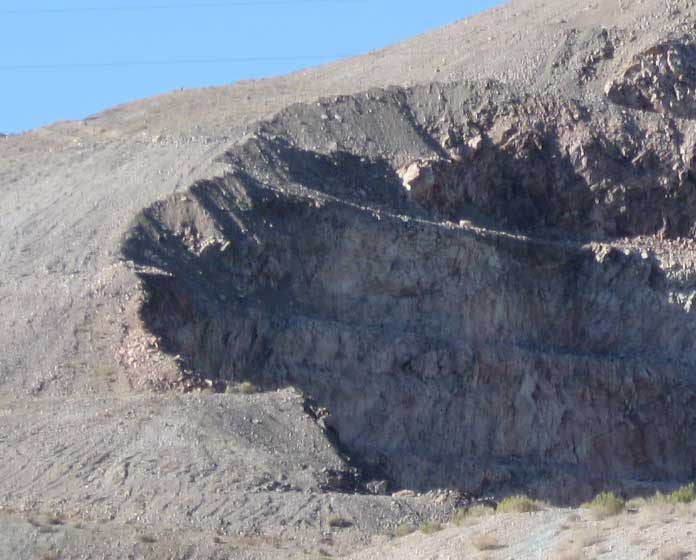 In northern Nevada, huge stripmines digging out ore and crushing it for gold are releasing tons of toxic mercury into the winds, as much as dozens of coal-burning power plants. In fact, these gold mines account for most of the mercury emissions in the nation. Nevada has a state program that is beginning to work with mines to control mercury emission. But soon the federal Environmental Protection Agency will decide if the state program is strong enough and if it needs to intervene in regulating gold mines.
In northern Nevada, huge stripmines digging out ore and crushing it for gold are releasing tons of toxic mercury into the winds, as much as dozens of coal-burning power plants. In fact, these gold mines account for most of the mercury emissions in the nation. Nevada has a state program that is beginning to work with mines to control mercury emission. But soon the federal Environmental Protection Agency will decide if the state program is strong enough and if it needs to intervene in regulating gold mines.
The EPA is acting under a court order last fall in a lawsuit over clean-air standards. The Nevada Mining Association said it will fight the EPA.
See the story in the Las Vegas Sun >>here.
See our story on mine pollution >>here.
February 26, 2009
Western Shoshone Tribal Land Threatened by Huge Cortez Mine
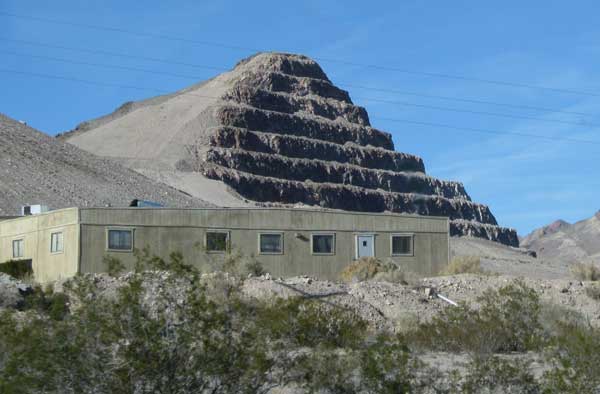
^Played out gold mine near Beatty, Nevada.
By the Eureka/Lander County boundary in the heart of he Great Basin of Nevada, Canadian company Barrick Gold, the world's largest gold mining company, has been given a permit to vastly expand a local gold mine on the pinyon-juniper covered Cortez Range on Mount Tenabo. The problem, the Western Shoshone Tribe states, is that the land is "located entirely within the territory of the Western Shoshone Nation." They sued, along with the South Fork Band Council of Western Shoshone of Nevada, the Timbisha Shoshone Tribe, the Western Shoshone Defense Project, Great Basin Mine Watch, and the nonprofit Western Mining Action Project.
The Shoshone remind the company and federal land managers that Mt. Tenabo is part of the ancestral land of the Western Shoshone according to the 1863 treaty with the U.S. government made at Ruby Valley. The land has never been legally ceded to the federal government, but today the Bureau of Land Management (BLM) continues to issue permits to mining companies.
One report says: For the Western Shoshone “Mt. Tenabo is … considered a traditional locus of power and source of life, and figures in creation stories and world renewal. As the tallest mountain in the area – the most likely to capture snow and generate water to grow piñon and nourish life – it is literally a life-giver. Water is to earth what blood is to the body, and these subterranean waterways are likened to the earth’s arteries and veins.”
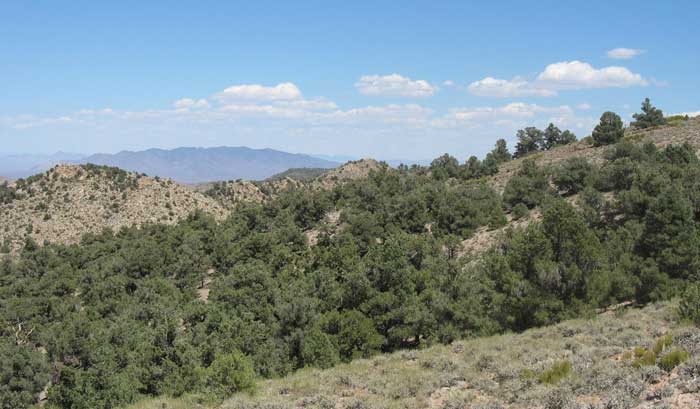
^Nevada Great Basin pinyon mountains.
In January of 2009 U.S. District Judge Larry Hicks decided not to grant an injunction sought by the Shoshone to stop construction one of the largest open pit gold mines in the United States - the Cortez Hills Expansion Project on Mt. Tenabo. A key question in this case was whether the permit granted by BLM imposed a "substantial burden" on the tribe's religious conduct under the Religious Freedom Restoration Act. The judge concluded that while tribal members' spiritual experience may be diminished by the project, that does not amount to a substantial burden.
The area is a center for gold exploration in the United States. Barrick Gold plans to excavate 6,750 acres of public land that could contain 250 tons of gold. The company says it will follow strict Nevada state rules to prevent cyanide leaks and will emit hardly any mercury. Metal mines emit nine times more mercury than all other industries combined and eight of the ten largest emitters of mercury in the US are gold mines. Mercury from gold mines even ends up in ocean fish in the Pacific.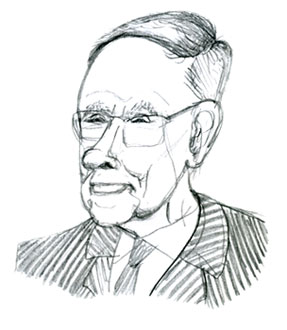
Nevada Senator Harry Reid (D) has been instrumental in blocking efforts to reform the archaic General Mining Law of 1872, that allows mining companies to take an estimated $408 billion worth of gold and other hard rock minerals from public lands (mostly BLM) without paying a single cent in federal royalties or leases. The cleanup bill, estimated at more than $30 billion nationwide, is then footed by taxpayers. Reid owns a few defunct gold mines. His sons and son-in-law have ties to mining companies. Rory and Leif work for law firms that represent mining companies, and since 1999, his son-in-law, Steven Barringer has earned as much as $3.7 million lobbying for mining interests including Barrick Gold.
The Shoshone filed a notice to appeal the ruling to the 9th U.S. Circuit Court of Appeals in early February 2009. But judges refused emergency injunctions to stop the project.
^Harry Reid (D-NV)
The appeal filed by Western Shoshone tribes, the Western Shoshone Defense Project and the Great Basin Resource Watch will move into the briefing stage for a hearing before a three-judge 9th Circuit panel, according to their lawyer, Roger Flynn of the Western Mining Action Project in Colorado.
See the article in Mining Watch Canada >>here.
See the January 2009 in ENS-Newswire article >>here.
See the February 2009 article in Mother Jones, "Harry Reid, Gold Member: Is our Senate leader in bed with America's worst polluter?" By Josh Harkinson>>here.
See Great Basin Resource Watch >>here.
See protestbarrick.net.
HOME.....Reward Mine
